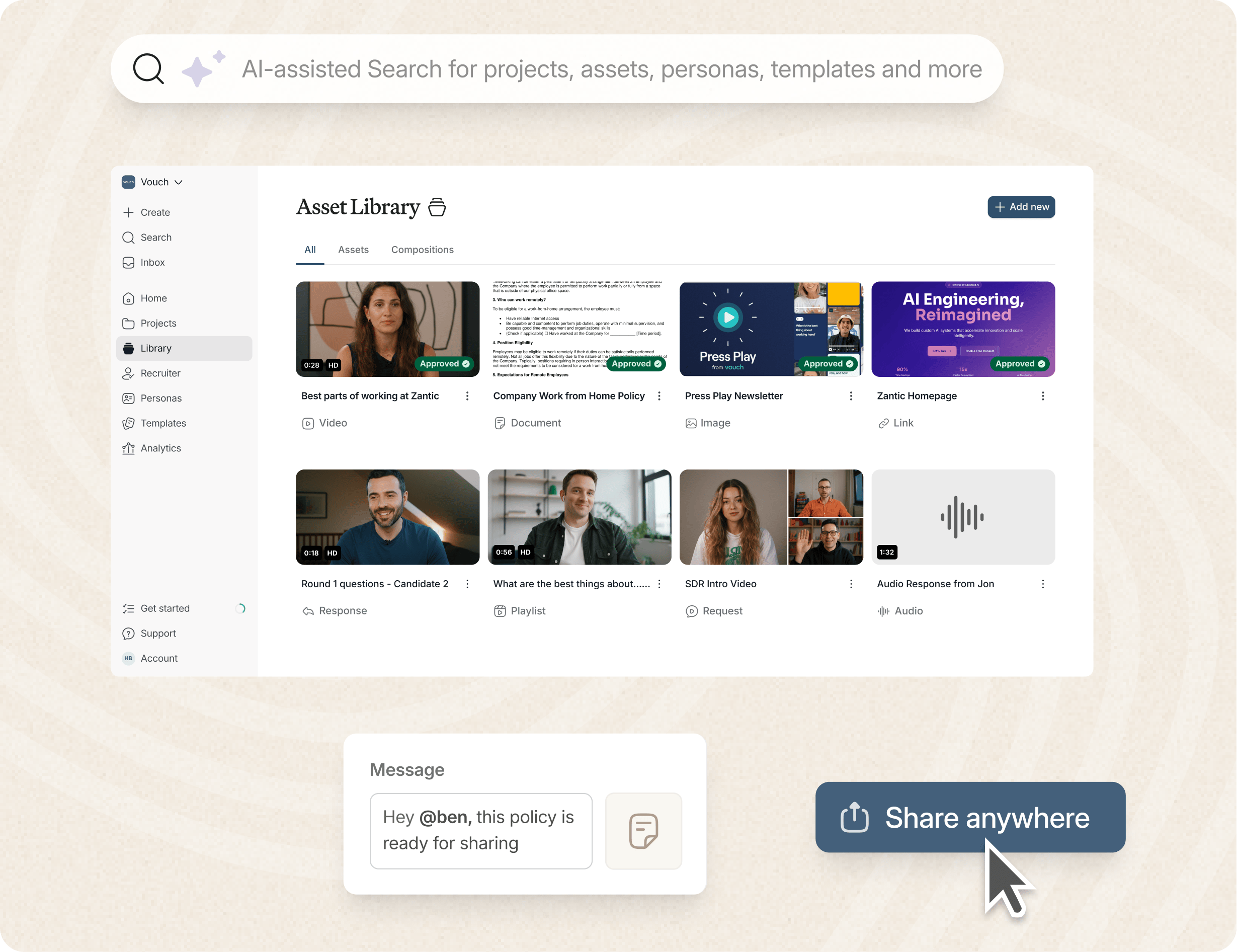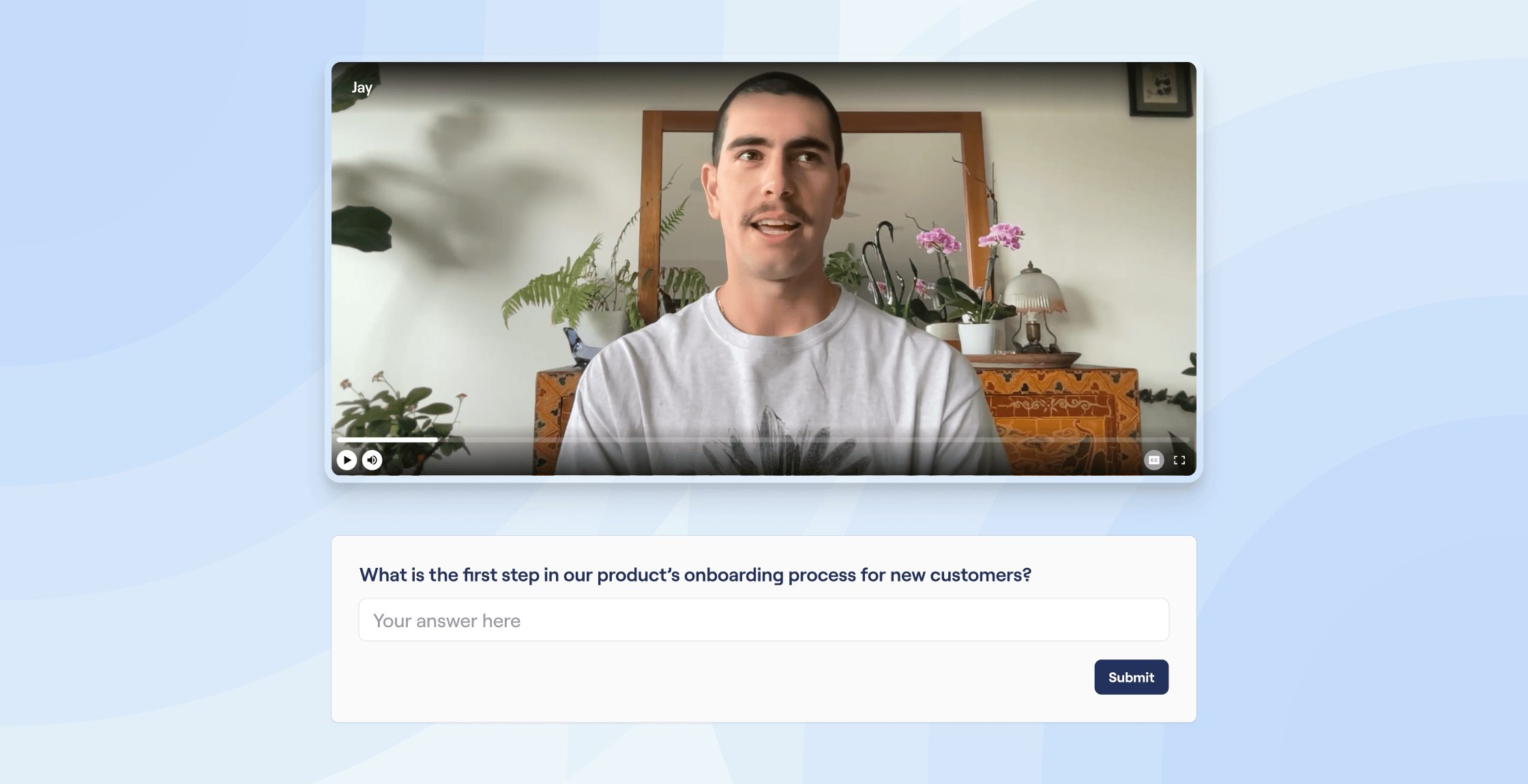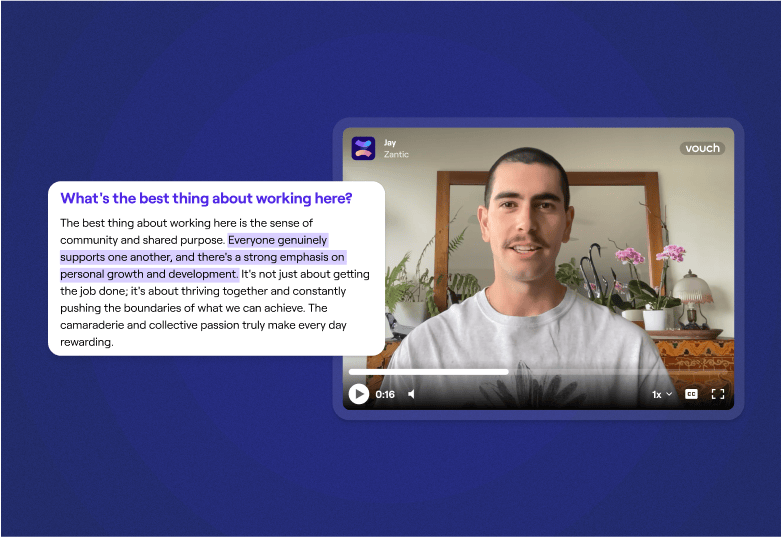Microlearning, using tools like Vouch, has transformed the way busy professionals learn.
But how did we get here? The history of microlearning dates back to the 20th century, with its principles with deep roots in human history.
In this guide, we'll explore the origins of microlearning history, how it evolved over time, and why it's become a go-to method for modern corporates, and our growing shorter intention spans due to social media and evolution.
We'll also dive into real statistics and data that show how microlearning impacts knowledge retention, employee productivity, and more.
Let's dive in.
A Brief History of Microlearning
The term "microlearning" might sound modern, but the idea of breaking down information into small, digestible chunks has been around for centuries.
In the 20th century, behavioral psychologists began to recognize that shorter, focused learning sessions were more effective for retention than long, exhaustive study periods.
Behavioral Psychologists, Early Microlearning History and Concepts:
In the 1960s, psychologists like B.F. Skinner experimented with what we now call microlearning techniques. By focusing on short bursts of information followed by immediate application or feedback, they found that learners were more likely to retain information. This approach laid the groundwork for what would become modern microlearning methods.
1950s-1970s: Cognitive Load Theory and the Beginnings
During the mid-20th century, cognitive load theory emerged, suggesting that the human brain could only process a limited amount of information at once. This led educators to experiment with shorter, more focused learning experiences, laying the groundwork for what we now call microlearning.
1980s-1990s: Rise of Digital Learning
As technology advanced, digital learning platforms began to appear, making it easier to deliver educational content in various formats. The 1990s saw the rise of the eLearning Industry, where the term "microlearning" first gained traction, albeit in a more experimental form.
2000s: Microlearning Goes Mainstream
By the early 2000s, the Internet was a staple in most homes and workplaces, making online learning more accessible. Microlearning started to take off as organizations recognized its potential for improving knowledge retention and engagement rates in corporate training programs.
2025: The Modern Era of our Microlearning History
Today, microlearning is a staple in many educational and corporate settings. The modern learner, with a human attention span shorter than ever, demands bite-sized, relevant content that can fit seamlessly into their daily routines.
Microlearning platforms now offer a wide range of microlearning modules, from instructional videos to scenario-based learning activities, all designed to enhance the learning experience and meet the demands of today's fast-paced world.
The AI-enabled workspace for talent teams.
- Unified workspace for talent teams
- Accelerate hiring with AI tools
- Auto-generate polished hiring and employer brand content
- Easily repurpose assets across all channel

What Is The Evolution Of Microlearning History and The Platforms?
Microlearning in the 21st Century
Today, microlearning has evolved into a sophisticated training approach used in a wide range of industries, from healthcare and logistics to tech. Whether it's employee onboarding, corporate training programs, or online learning, microlearning methods are now embedded into the fabric of educational and training systems.
The key to its success lies in its flexibility and ability to cater to the learning styles of individual learners.
Microlearning Platforms
Modern microlearning platforms like Vouch provide interactive microlearning experiences that engage users through scenario-based learning, instructional videos, and even game-based learning. These platforms capitalize on the reduced cognitive load by offering training in bite-sized chunks, leading to higher completion rates and better retention rates.
Scenario-Based Learning
One of the most effective microlearning techniques is scenario-based learning. This method places the learner in a simulated situation where they must apply what they've learned. It's particularly useful for complex concepts that require in-depth training, allowing learners to actively participate and see the immediate application of their knowledge.
What Are The 3 Major Benefits of Microlearning?
1. Knowledge Retention:
When we look at microlearning history, studies have shown that the micro-learning process significantly improves knowledge retention compared to conventional training methods. According to research published in the eLearning Industry, microlearning can improve retention rates by up to 80%. This is because the content is broken down into small, manageable pieces that are easier to remember.
2. Increased Employee Productivity:
Microlearning is also linked to increased employee productivity. A study by the Journal of Applied Psychology found that microlearning when integrated into daily routines, can boost productivity by up to 17%. This is largely because microlearning allows employees to learn on the go without the need for lengthy training sessions that disrupt their workflow.
3. Higher Engagement Rates:
Engagement rates are a critical metric in any training program. Microlearning strategies, with their focus on interactive and varied content, have been shown to achieve much higher engagement rates than traditional training methods. This is partly due to the use of multimedia elements like video clips and instructional videos that keep learners interested.
How Can You Use Microlearning In Your Company?
Employee Onboarding:
One of the most common applications of microlearning is in employee pre-boarding and onboarding. Through microlearning modules, new hires can quickly become familiar with the company's processes and culture.
This form of learning is particularly effective because it allows new employees to learn at their own pace, fitting training into their daily lives without overwhelming them with information.
Corporate Training Programs:
Microlearning history, we can see that it's a game-changer when it comes to corporate training programs. Traditional classroom training sessions often struggle with low completion rates and poor retention. In contrast, microlearning courses, delivered through mobile talent development platforms like Vouch, ensure that training content is accessible and engaging, leading to higher completion rates and better outcomes.
Continuous Learning and Development:
The concept of continuous learning is at the heart of microlearning. In today's fast-paced business environment, employees need to keep their skills sharp. Microlearning techniques, such as scenario-based learning and contextual processes, allow for continuous learning that keeps employees up-to-date with the latest industry trends and practices.
Case Study: Microlearning at a Growing Tech Company
To illustrate the power of microlearning, let's look at a real-world example similar to the companies that use Vouch, such as Cisco, Amazon, HubSpot, Canva, and more.
Challenge: A leading tech company with over 10,000 employees worldwide, the company was facing low engagement and completion rates in its conventional training programs. Employees found the lengthy, text-heavy training content overwhelming and often failed to complete the courses.
Solution: The company decided to implement a Vouch video-based microlearning strategy. They partnered with a microlearning platform to create a series of micro-courses focused on key areas like product knowledge, customer service, and compliance. The content was broken down into bite-sized chunks, each focused on a single learning objective.
Results: Within six months, the company saw a 45% increase in completion rates and a 30% improvement in knowledge retention. Employee feedback was overwhelmingly positive, with many citing the flexibility and relevance of the microlearning content as key factors in their engagement. The company also reported a 20% increase in employee productivity, attributed to the reduced training time and the ability to integrate learning into daily routines.
This case study underscores the effectiveness of microlearning in addressing common challenges in corporate training, particularly those related to engagement and retention.
Why Is Microlearning Here to Stay in 2025 and Beyond?
Adaptability to Different Learning Styles:
When we look at the history of microlearning, one of microlearning's greatest strengths is its adaptability. Whether you're a visual learner who prefers instructional videos or someone who learns best through active participation in scenario-based learning, microlearning has something for everyone. This adaptability makes it an ideal method of teaching for a diverse workforce.
Alignment with Modern Attention Spans:
With social media like Facebook, Instagram, LinkedIn and Twitter being a common part of our daily lives and routines, attention spans are shorter than ever. Microlearning aligns perfectly with this reality, delivering content in small, digestible chunks that are easy to consume even within the tight blocks of time available in a busy workday.
Integration with Digital Processes:
The rise of digital processes in business has made microlearning an indispensable tool. Whether it's mobile learning or online training, the ability to access training material anytime, anywhere (like on the subway to work) has made microlearning the preferred choice for many organizations.
FAQs
What is microlearning?
Microlearning is a method of teaching that delivers content in small, easily digestible chunks, typically focused on a single learning objective.
How does microlearning improve knowledge retention?
Microlearning improves retention by breaking down complex concepts into manageable pieces, making it easier for learners to remember the information.
What are the benefits of microlearning for employees?
Benefits include improved knowledge retention, increased productivity, higher engagement rates, and the ability to learn on the go.
Can microlearning be used for complex subjects?
Yes, microlearning is effective for complex subjects, especially when combined with techniques like scenario-based learning.
What industries can benefit from microlearning?
Almost any industry can benefit, including tech, healthcare, finance, and retail, where continuous learning is essential.
How do microlearning platforms work?
Microlearning platforms deliver content through interactive modules, videos, and quizzes that can be accessed on various devices.
Is microlearning suitable for employee onboarding?
Absolutely, microlearning is particularly effective for onboarding, allowing new employees to learn at their own pace without overwhelming them.
Final Thoughts on the History and Future of Microlearning
Microlearning has come a long way from its early roots in behavioral psychology. Today, it's a vital tool in the arsenal of any organization looking to enhance its training programs and improve knowledge retention. As the demands on modern learners continue to grow, the need for flexible, adaptable, and effective learning methods like Video microlearning will only increase. Whether you're implementing it for employee onboarding, corporate training, or continuous learning.
Like to try Vouch for Microlearning?
Loved by companies like Canva, Nike, Cisco, HubSpot, Amazon, and more, tools like Vouch make leveraging video in your business communication and recruitment remarkably easy.
Be sure to book a Vouch demo today and chat with a video content expert.
You might also like

Elevate Your Brand Today With Vouch
Discover how Vouch can accelerate talent acquisition while helping you stay on-brand.






